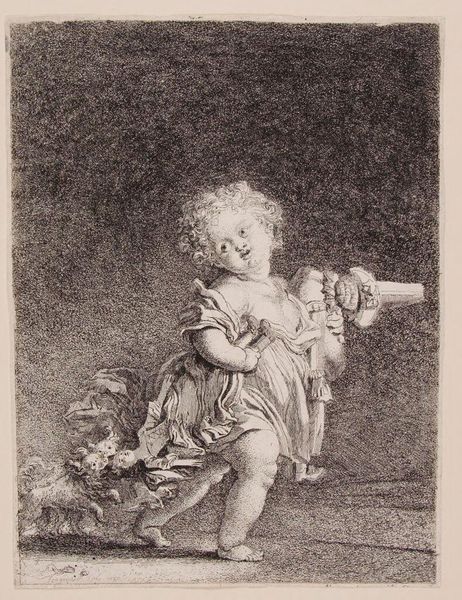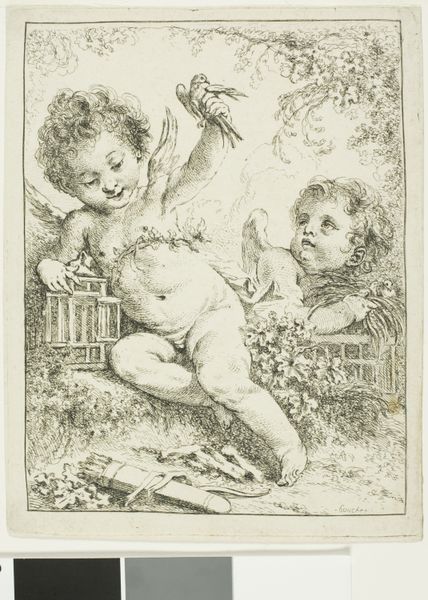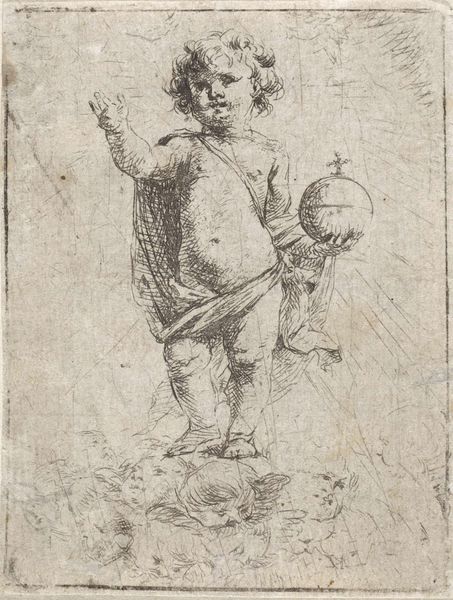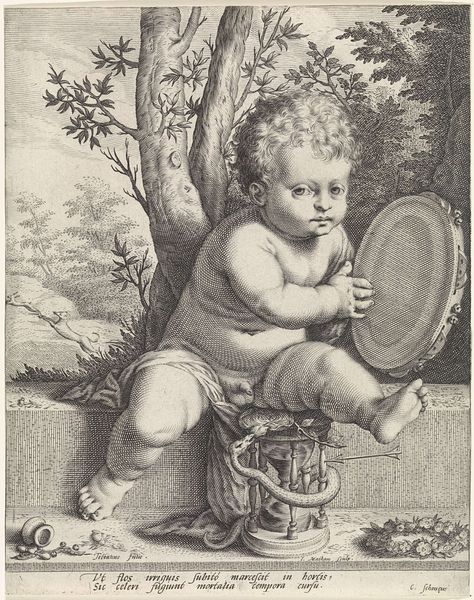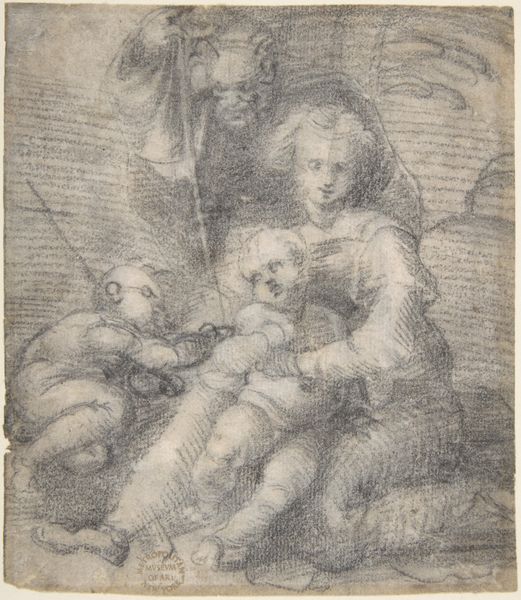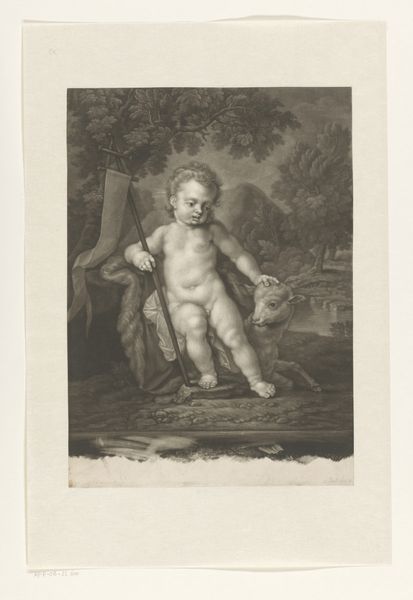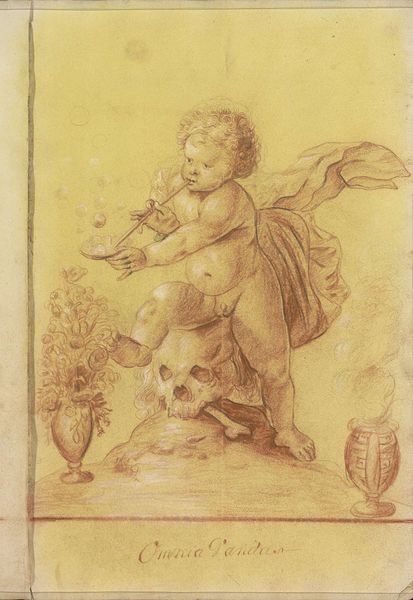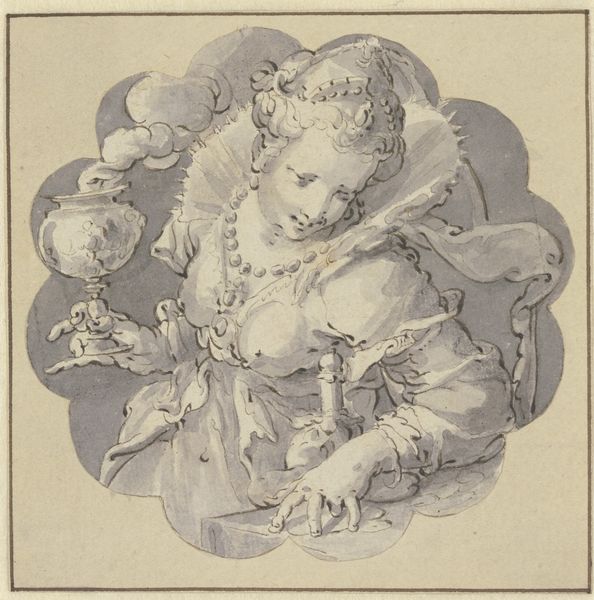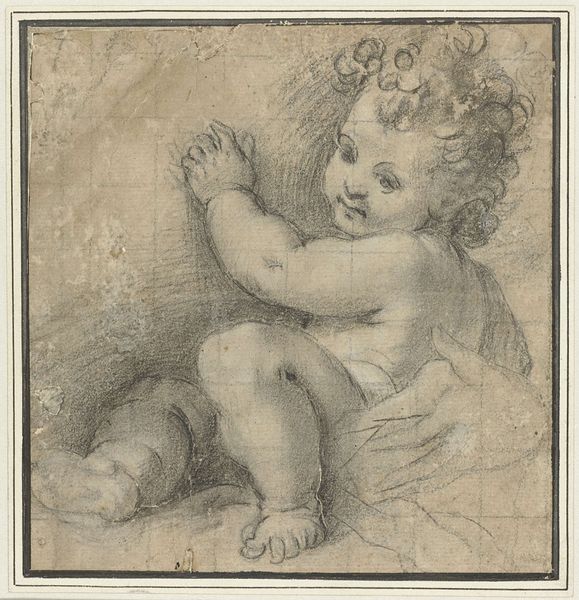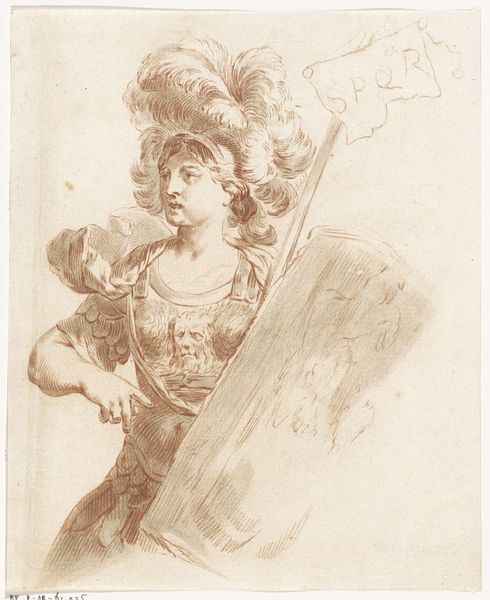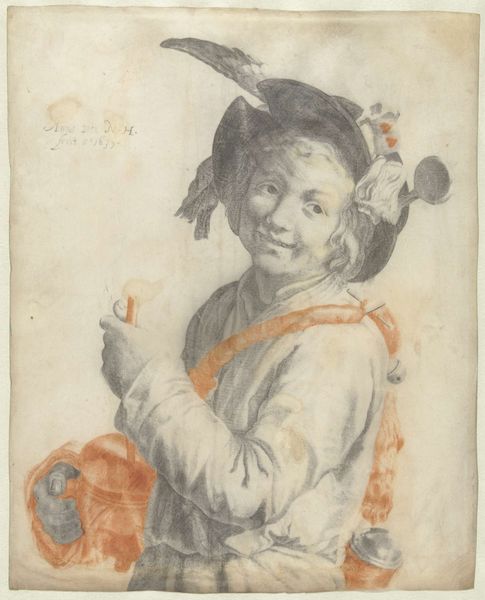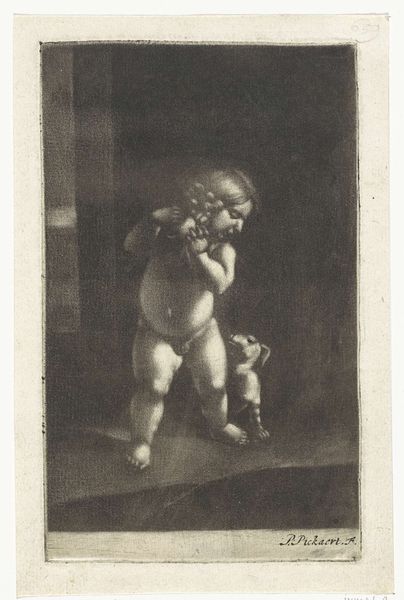
Dimensions: sheet: 10 1/8 x 7 3/8 in. (25.7 x 18.8 cm) image: 9 3/4 x 6 13/16 in. (24.7 x 17.3 cm)
Copyright: Public Domain
Editor: Here we have Jean-Honoré Fragonard's "Fanfan," an etching from 1778 currently held at the Metropolitan Museum. It depicts a rather chubby child with a toy and a dog. The line work is delicate but there is such volume in the character; he feels three-dimensional. What stands out to you about this print? Curator: I'm drawn to how the work highlights the relationship between artistic production and social class. Etchings like this one weren't just pretty pictures; they were commodities. Prints democratized art, making it accessible to a broader audience beyond the aristocracy. Fragonard was actively participating in a changing art market. Look at the details of the etching technique - it implies labor, the means by which the image is reproduced and distributed. This challenges a solely aesthetic interpretation. Editor: That's fascinating. So you see the work less as a simple depiction of childhood and more as evidence of shifting cultural production? Does the subject matter – a child at play - reflect those shifting attitudes toward consumption? Curator: Exactly! Consider the paper itself: its quality, source, and availability speak to economic systems and trade routes of the time. The Rococo style is all about ornamental excess. Does this aesthetic reflect a growing culture of consumerism that trickles down even to children's toys? Was Fragonard perhaps offering a subtle commentary on this trend? Editor: It's interesting to consider it less as a snapshot and more as a document of material culture. I hadn't thought about it in terms of artistic and social production, before. Curator: Looking closely at the physical processes of creation opens new avenues for interpreting its meaning and broader cultural relevance.
Comments
No comments
Be the first to comment and join the conversation on the ultimate creative platform.
